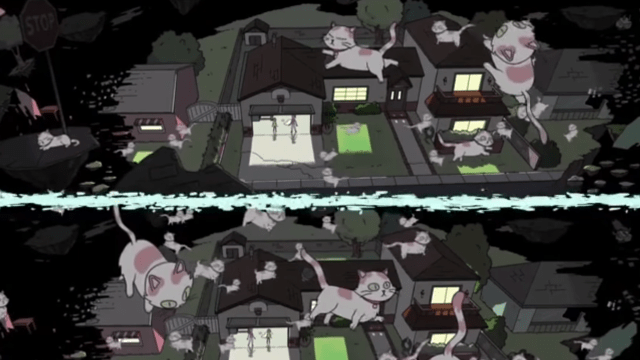One of the more popular scientific theories in pop culture is Schrödinger’s Cat, having been referenced in things like The Simpsons and Rick and Morty, to name a few. But what exactly does it mean?
Explanations of the theory online get complicated quickly. The theory goes in on quantum mechanics and superposition while retaining quite a comical appearance. It’s about a cat, after all, which makes it seem more lightweight than the theory actually is. It’s not just about having a cat that can’t choose between being dead or alive – it actually tells us something interesting about the state of the universe.
What does Schrödinger’s Cat actually mean?
The basic understanding of Schrödinger’s Cat goes like this: it’s a cat in a box, and because it’s in a box and we can’t see it, we don’t know if it’s alive or dead.
This generalisation of the theory kiiind of gets the point, but it’s missing quite a few important details.
Firstly, the cat inside the box is joined by three things: a vial of poison, a radioactive source, and a Geiger counter. It might seem like a random assortment of objects, but follow me here. As the Geiger counter operates, it is scanning for atom decay, a seemingly random event.
When an atom begins to decay (which is impossible to know the time of which in any given timeframe), the Geiger counter activates and shatters the glass vial, exposing the poison to the cat.
The trick is that we don’t know if the cat will or won’t drink the poison, putting it (observably) in two oscillating states: dead or alive. We call this superposition. It’s not until we look in the box that we have the physical answer.
The underlying question of the theory is to address when quantum superposition ends and how reality takes shape.
To break it down, we don’t know which state the cat is in – dead or alive, as dependent on the mutation of a particle. Unless it is observed, we don’t know what state it is in – and we can’t force it to be in either quantum state as observers.
And why does Schrödinger’s Cat matter?
Schrödinger’s Cat matters as a thought experiment of quantum mechanics in a bunch of ways, but mostly because it forces physicists to consider the study of quantum mechanics as more than just observer-driven.
Recently, physicists created the “fattest Schrödinger’s Cat ever”, which means that the researchers were able to upscale the size of the atom in the experiment and oscillate it back and forward, putting it in two states of superposition at once. It’s research and theories like this that will hopefully, one day, have a great impact on our world (perhaps through the oscillation of qubits in quantum computing) and potentially improve the way that we do things, but of course, the quantum world is still a great big unknown. There are plenty of unknowables, dead ends, and new problems that we don’t have solutions for.
And ultimately, the theory was originally conjured as a critique of quantum interpretations during the mid-1900s, as explored by wtamu.com – it’s not a particularly important theory to quantum mechanics, as it doesn’t do much to prove anything beyond recognise quantum superposition, but it’s certainly a popular one and a worthwhile thought experiment.
No cats were harmed during the writing of this article.
